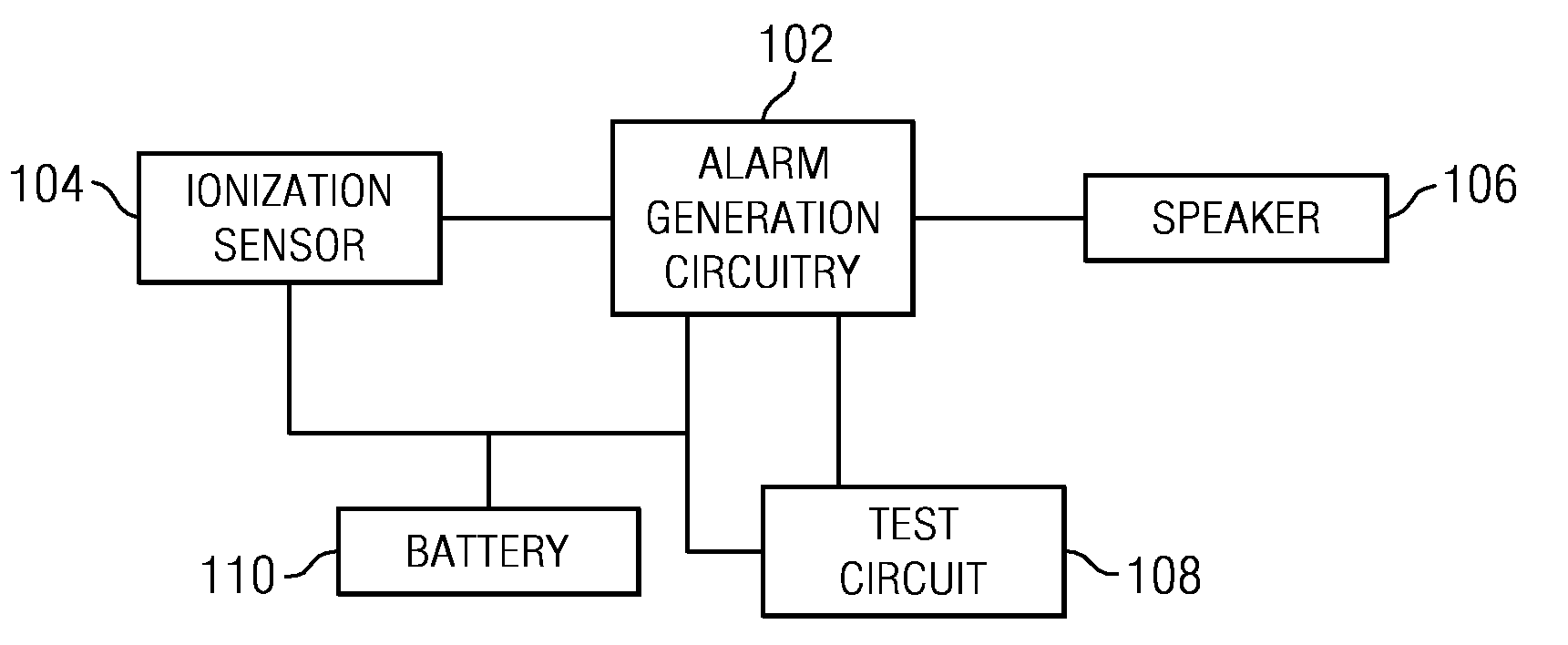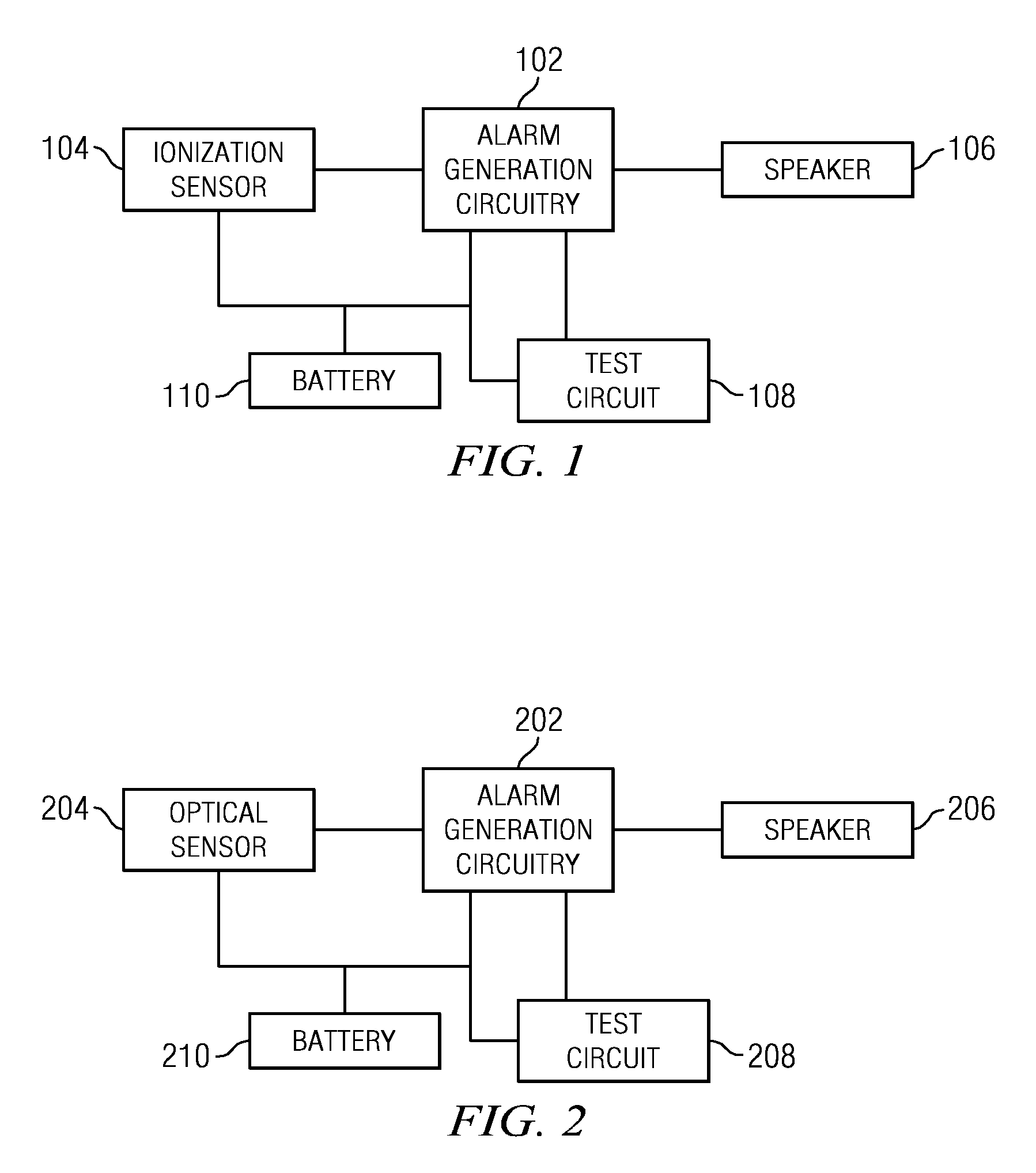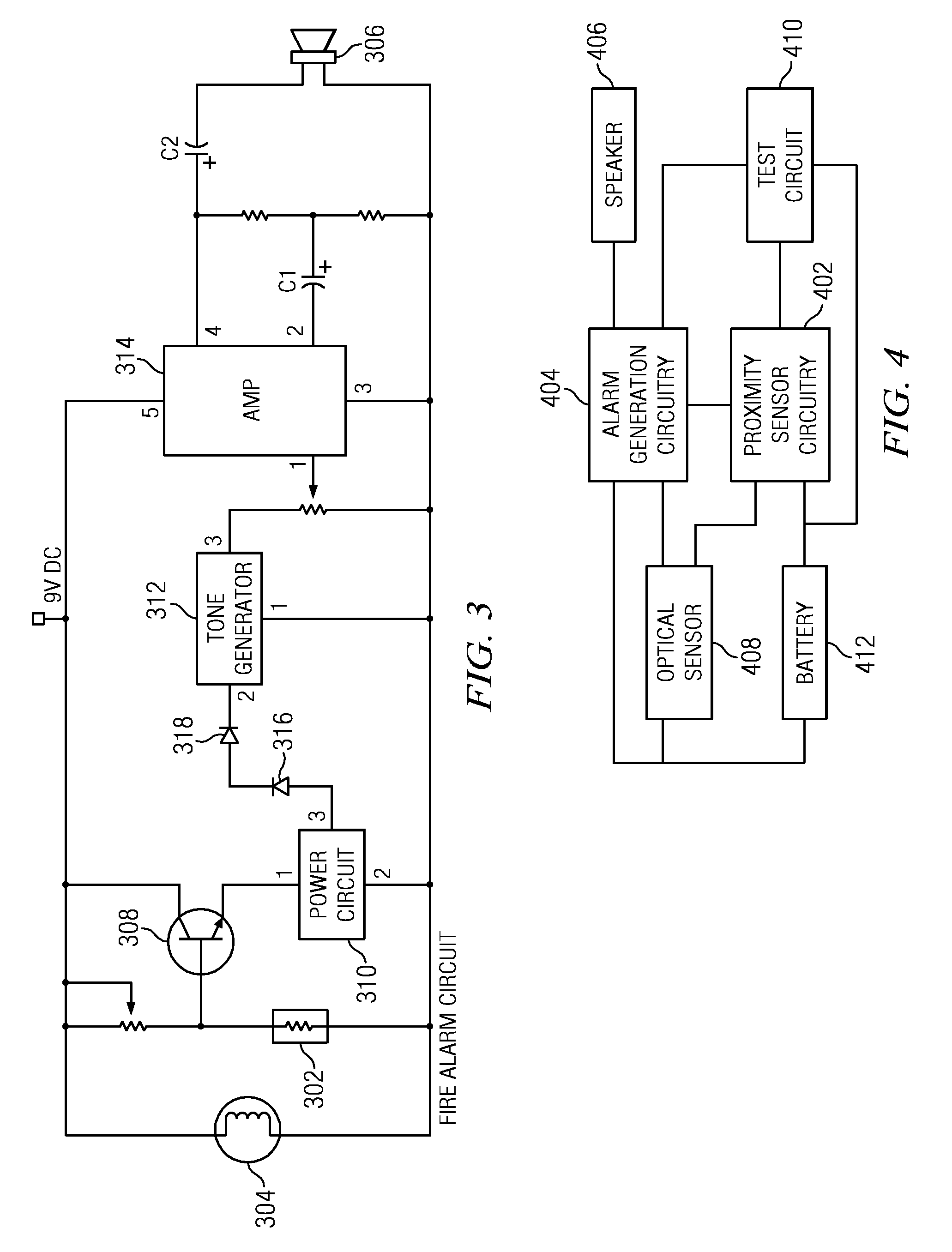Use of optical reflectance proximity detector for nuisance mitigation in smoke alarms
a proximity detector and optical reflectance technology, applied in the field of smoke alarms, can solve the problems of not having a convenient method of discontinuing the loud, shrill alarm, and certain types of false alarm indications that are often very annoying to users
- Summary
- Abstract
- Description
- Claims
- Application Information
AI Technical Summary
Benefits of technology
Problems solved by technology
Method used
Image
Examples
Embodiment Construction
[0016]Referring now to the drawings, wherein like reference numbers are used herein to designate like elements throughout, the various views and embodiments of a smoke alarm having proximity detection operation mode are illustrated and described, and other possible embodiments are described. The figures are not necessarily drawn to scale, and in some instances the drawings have been exaggerated and / or simplified in places for illustrative purposes only. One of ordinary skill in the art will appreciate the many possible applications and variations based on the following examples of possible embodiments.
[0017]Referring now to the drawings, and more particularly to FIG. 1, there is illustrated a functional block diagram of a first type of smoke alarm. The smoke alarm of FIG. 1 utilizes ionization detection to detect smoke. The alarm generation circuitry 102 is associated with an ionization sensor 104. The ionization sensor 104 detects particles of smoke using a small amount of radioact...
PUM
 Login to View More
Login to View More Abstract
Description
Claims
Application Information
 Login to View More
Login to View More - R&D
- Intellectual Property
- Life Sciences
- Materials
- Tech Scout
- Unparalleled Data Quality
- Higher Quality Content
- 60% Fewer Hallucinations
Browse by: Latest US Patents, China's latest patents, Technical Efficacy Thesaurus, Application Domain, Technology Topic, Popular Technical Reports.
© 2025 PatSnap. All rights reserved.Legal|Privacy policy|Modern Slavery Act Transparency Statement|Sitemap|About US| Contact US: help@patsnap.com



